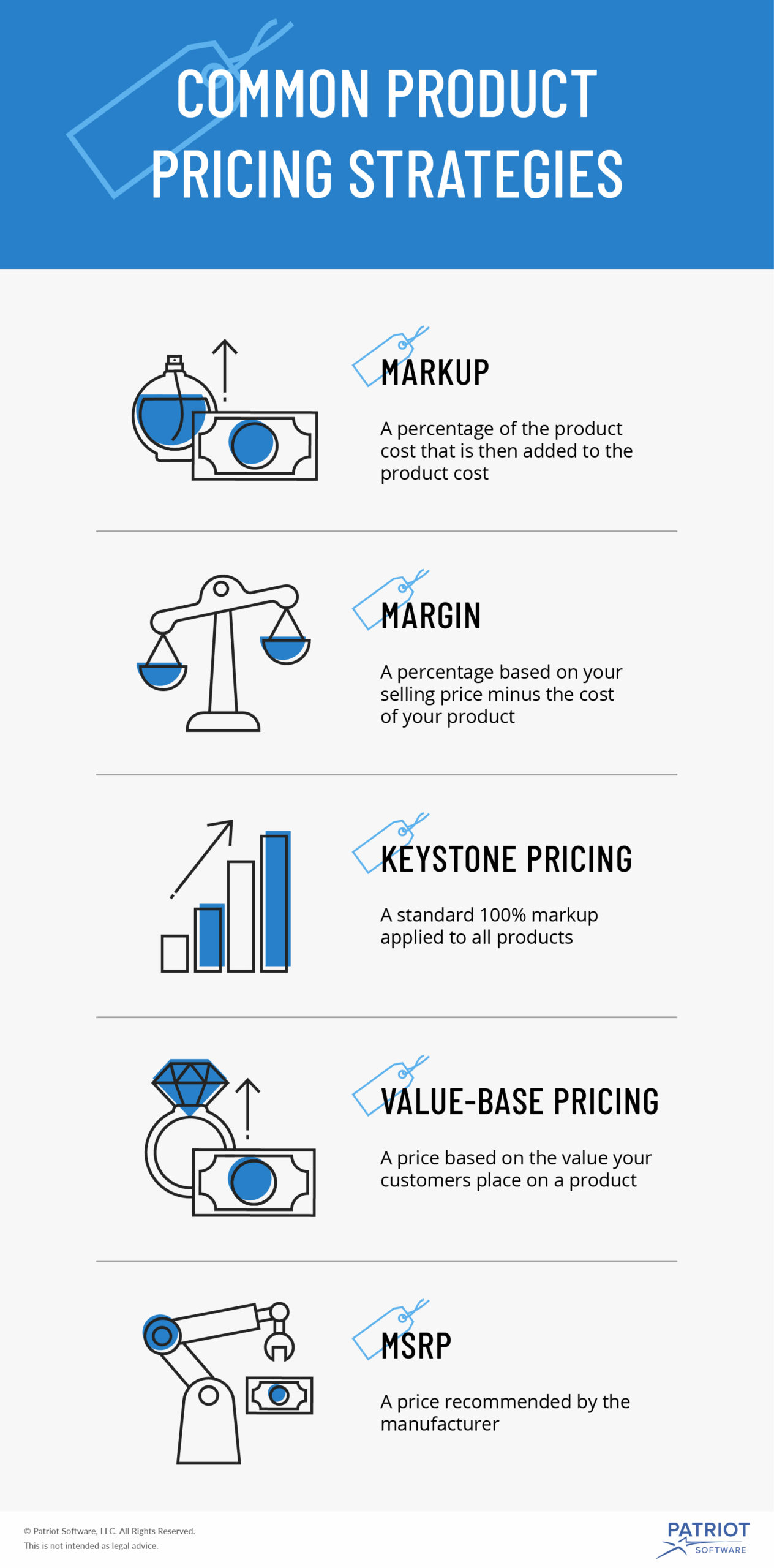Product pricing can make or break your small business. If you set prices higher than what customers are willing to spend, you lose sales. But if you set prices too low, you don’t earn at your highest potential. Price points need to meet somewhere in the middle to generate the most revenue. Do you know how to price items for your small business?
There is no simple formula for getting prices right. However, you can use different business pricing strategies and methods to find an amount that satisfies you and your customers.
How to price a product
Consider the following factors as you learn how to price a product for retail.
Know your customers
You need to understand your customers. They will help determine how much you should charge.
To help you understand your customers, you should conduct a market analysis. The results of your market analysis will give you information about your customers’ demographics, including where they live, their interests, and income level.
Based on the information you learn about your customers, you can determine how much they might be willing to pay. For example, if your customers come from mainly low to middle-class backgrounds, they might not be willing to pay luxury prices.
Know your competitors
How much your competitors charge can also impact your prices.
Check out how much your competitors charge their customers. Their prices can provide a baseline for how much you charge your customers.
You can set your prices equal to your competitor’s prices. You might also set your prices lower to try to attract some of their customers. Or if you want to present yourself as a luxury brand, you might set your prices higher.
Determine your costs
Before you do product pricing, you need to know how much you spend on the products. You need to calculate every cost that goes into you creating or acquiring each item.
If you purchase products and resell them, add up the costs of buying and shipping the items.
If you create the products yourself, include all the costs that go into making the items, including development, materials, and overhead.
Once you know how much you spend on products, you have your break-even point. The break-even point is the minimum amount you must sell the products for to earn back the money you invested in them.
Determine your pricing strategy
There are multiple pricing strategies you can use to set your prices. The pricing strategy you use might depend on industry standards or simply what works best for your business.
Below are five common pricing strategies that you might use at your small business.

Markup
Markup is a percentage of the product cost. Adding the markup percentage to the product cost is a popular method to price products. And, you can easily use different markup percentages for different items.
To calculate the sale price of a product using a markup, use the following formula:
Sale Price = Product Cost + (Product Cost X Markup Percent)
Let’s say it takes $50 for you to make a particular product, and you want to apply a markup of 60%.
$50 + ($50 X 0.60) = $80
In this case, you would sell the product for $80 to get your 60% markup.
The markup percentage you use might depend on your industry, manufacturing and purchasing costs, how much you expect to earn, or other factors.
Margin
Margin is a percentage that is based on your selling price minus the cost of your product. It tells you how much more you sell an item for than the amount you paid for it.
While markup and margin sound similar and both have percentages, they are not the same. Be careful to not mix up markup vs. margin.
Use the following formula to calculate the margin on a product:
Margin = (Sale Price – Product Cost) / Sale Price
Let’s go back to the markup example. You sell a product for $80 and it has a 60% markup. Let’s calculate the margin for that product.
($80 – $50) / $80 = 0.375
Your margin on that product is 37.5%. As you can see, the markup and margin percentages are not the same.
You can use margin to determine your prices if you want to earn a specific margin. However, markup is used more for setting prices, and margin is used more for determining how much you take away.
Keystone pricing
Keystone pricing is a standard 100% markup. With keystone pricing, you apply this standard markup to all your products.
Keystone pricing might not be best if you sell a wide array of products. You might find that some products are priced too low while others are priced too high.
Value-based pricing
A value-based price is a price set based on how much value your customers place on a product. Even though markup or margin might put your product at a lower price, customers might be willing to pay more because of their perceived value. Customers might perceive a greater value based on experience with other products or competitors. Or, they might see a greater value based on novelty or rarity.
MSRP
MSRP stands for manufacturer’s suggested retail price. This is the price the manufacturer recommends that you sell their products at. The MSRP helps manufactures standardize the prices of their products across multiple retailers.
The MSRP also makes it easy for you to determine the prices for your products. But, by using the MSRP, you may not get a pricing advantage over your competitors.
Do you need a simple way to track your business’s transactions? Our easy-to-use, small business accounting software is made for small business owners like you. Try it for free today.
This article is updated from its original publication date of 3/17/2016.
